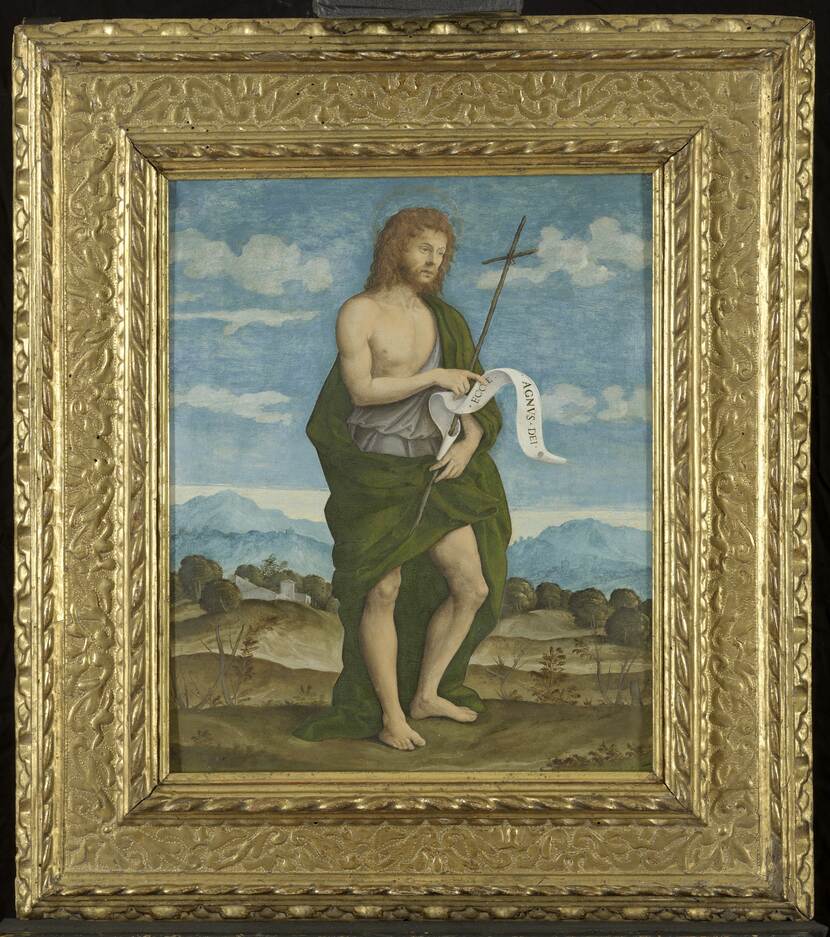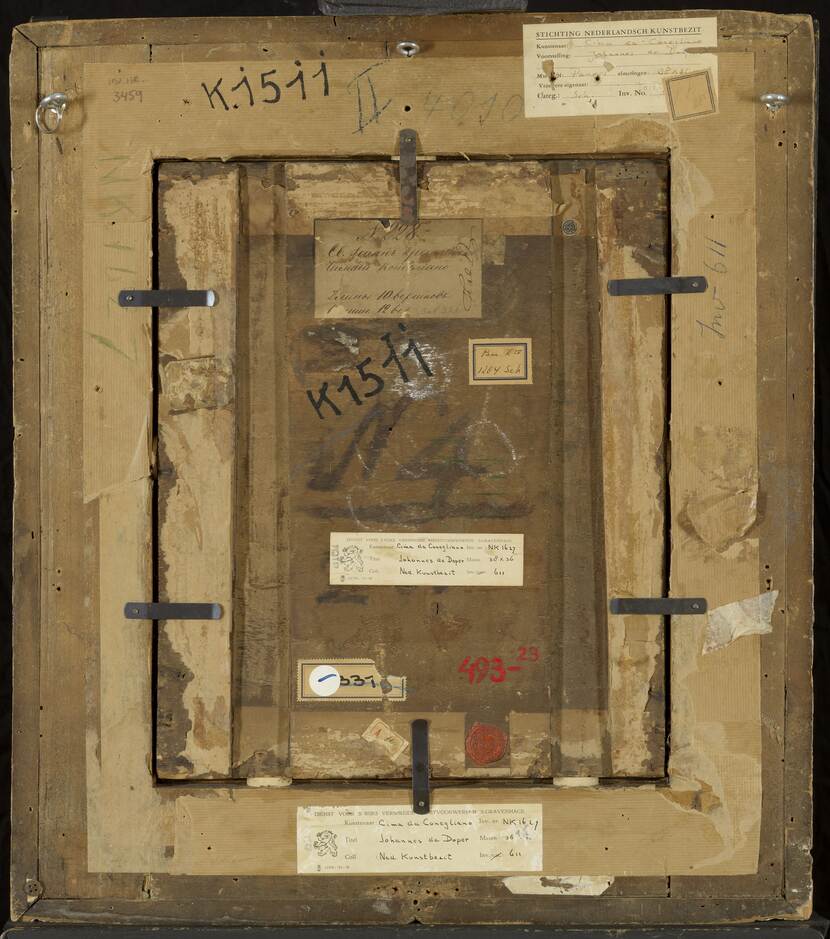In Pursuit of Provenance: John the Baptist by Girolamo da Santacroce
Weblog
Every month the In Pursuit of Provenance blog discusses an object from the Netherlands Art Heritage Collection (NK Collection) on which in-depth provenance research is being carried out. Hopefully, this will enable more restitution requests to be honoured and allow property to be returned to its rightful owners and their heirs. This month: the painting Johannes de Doper (John de Baptist) (NK1627) by the Venetian artist Girolamo da Santacroce.

In the depots of the Führermuseum
Provenance research on paintings starts with a thorough inspection of the rear of the work. The number K1511 immediately stands out on the back of NK1627. We have recently learnt that a K number was assigned by the Reichsdepot Kremsmünster (Kremsmünster State Depot). From the summer of 1941 this is where art objects were stored that were destined for the planned Führermuseum in Hitler’s birthplace, Linz, among other places.

These objects were bought in the occupied territories by the Sonderauftrag Linz (Linz Special Commission) which between June 1939 and December 1942 was headed by Hans Posse. Posse was commissioned by Adolf Hitler in June 1939 to buy an extensive art collection. He also bought many paintings from Dutch art dealers in 1940 and 1941 for that purpose. In making his acquisitions Posse had a marked preference for paintings by early German, Dutch and Italian painters, like NK1627.
The documentation of the Sonderauftrag Linz was preserved and has been digitalised by the Deutsches Historisches Museum (German Historical Museum). From that source we discover that NK1627, recorded in the Linzer Sammlung (Linz Collection) under number 1331, was bought by Posse from the art dealer Kurt Walter Bachstitz (4 October 1882 - 28 May 1949) in The Hague. The correspondence between Posse and Bachstitz is even more detailed; Bachstitz sold NK1627 to Posse on 28 August 1940 for 30,000 guilders (Dutch florins).
At the Kurt Walter Bachstitz art gallery
Before World War II the Jewish Bachstitz had an internationally-renowned art gallery with branches in New York, Vienna and The Hague. Bachstitz emigrated from Vienna to the Netherlands in 1938. The Hague office served as the headquarters of The Bachstitz Gallery from 1938 until Bachstitz and his wife Lilly Hofer emigrated to Switzerland in 1944.
The trade stock of The Hague branch of The Bachstitz Gallery was well documented at that time. A collection catalogue of The Bachstitz Gallery from 1935 states that Bachstitz acquired Johannes de Doper from the Viennese banker and art collector Stephan von Auspitz (11 October 1869 - 17 December 1945). Von Auspitz was director of the Auspitz, Lieben & Co. bank and used his extensive and valuable art collection as collateral for the bank. Following the bankruptcy of Auspitz, Lieben & Co. in 1931, Von Auspitz was forced to sell a large part of his collection in 1932 to Bachstitz for 475,000 US dollars.
In Vienna or The Hague?
Interestingly, this painting is not mentioned in the inventory of Stephan Von Auspitz from the 1930s. Similarly, the list of paintings that The Bachstitz Gallery bought from the Von Auspitz collection includes no object matching the description of NK1627 or anything like it. So it cannot be said with any certainty whether or not Bachstitz actually purchased this painting in 1932.
It is known that the liquidation of Stephan von Auspitz’s bank was a long drawn out process. At the time of the Anschluss, when Austria was annexed by Germany in March 1938, the liquidation of Von Auspitz’s property was still not complete. Bachstitz was given permission in 1932 to export part of the collection to The Hague and New York, while part of the former collection of Von Auspitz remained in Vienna until 1938. It is unknown whether NK1627 went to The Hague in 1932 or whether it remained in Vienna. Von Auspitz did not leave Vienna in the 1930s and from October 1942 was imprisoned in the Theresienstadt concentration camp. He survived World War II but lost his entire pre-war art collection.
Did Bachstitz actually buy NK1627 from Von Auspitz’s collection? And if so, did it remain in Vienna until 1938 or was it sent to The Hague in 1932? We don’t know for sure. Therefore our question is: do you know whether this painting is from the collection of Stephan von Auspitz? If you know anything more about this painting or have information which could help us further with our research, please contact us via: restitutie@cultureelerfgoed.nl.
This blog was written by David Bos, provenance researcher at the RCE.